A podcast project to fill the space in my heart and my time that used to be filled with academic research. In 2018, that space gets filled with... MORE SPACE! Cheerfully researched, painstakingly edited, informal as hell, definitely worth everyone's time.
243 posts
Latest Posts by fillthevoid-with-space - Page 7
I saw the picture and I thought it was a photo of the space between a Venetian blind and a window frame but no. No. It was a moon between the rings of Saturn.
My microphone just arrived! Now to set it up and figure out how the hell it works....

This photo of Astronaut Charlie Duke’s family has been on the moon for the last 43 years.
via reddit




“It sounds far fetched even for the plot of a sci-fi film.
NASA scientists have proposed a radical idea to launch a magnetic field around Mars, with hopes it could protect the red planet from intense solar wind and allow humans to explore alongside rovers.
Jim Green, NASA’s Planetary Science Division Director, revealed the idea today at the Planetary Science Vision 2050 Workshop in Washington DC…
The proposal would create a dipole field –a pair of equal and oppositely charged magnets – in an orbit between Mars and the sun, at a point known as Mars L1.
This ‘artificial magnetic field’ would put Mars inside a ‘magnetotail,’ protecting it from the harsh solar wind.
Without the barrage of high-energy particles, Mars’ atmosphere would begin to rebuild itself over time.
In just a matter of years, the simulations show the planet could achieve an ‘Earth comparable field.’
Increasing the pressure would cause the equator to heat up, leading the polar cap to collapse, Green says…"
Source: http://www.dailymail.co.uk/sciencetech/article-4276210/NASA-unveils-plan-surround-Mars-magnetic-field.html?ITO=applenews

This Black Eye Galaxy that got its name from the band of light absorbing dust appearing in front of the star systems bright center in the Hubble space telescope.
via reddit
Hubble Hones In on a Hypergiant's Home
NASA - Hubble Space Telescope patch. March 10, 2017
This beautiful Hubble image reveals a young super star cluster known as Westerlund 1, only 15,000 light-years away in our Milky Way neighborhood, yet home to one of the largest stars ever discovered. Stars are classified according to their spectral type, surface temperature, and luminosity. While studying and classifying the cluster’s constituent stars, astronomers discovered that Westerlund 1 is home to an enormous star. Originally named Westerlund 1-26, this monster star is a red supergiant (although sometimes classified as a hypergiant) with a radius over 1,500 times that of our sun. If Westerlund 1-26 were placed where our sun is in our solar system, it would extend out beyond the orbit of Jupiter.
Hubble orbiting Earth
Most of Westerlund 1’s stars are thought to have formed in the same burst of activity, meaning that they have similar ages and compositions. The cluster is relatively young in astronomical terms —at around three million years old it is a baby compared to our own sun, which is some 4.6 billion years old. For images and more information about Hubble, visit: http://hubblesite.org/ http://www.nasa.gov/hubble http://www.spacetelescope.org/ Image, Video, Credits: ESA/Hubble & NASA/Text Credits: European Space Agency/NASA/Karl Hille. Best regards, Orbiter.ch Full article
Ongoing Space Science Seeks to Keep Astronauts Healthy
ISS - Expedition 50 Mission patch. March 10, 2017 NASA is preparing for longer human journeys deeper into space and is exploring how to keep astronauts healthy and productive. The Expedition 50 crew members today studied space nutrition, measured their bodies and checked their eyes to learn how to adapt to living in space. The space residents also unloaded a cargo ship, worked on the Tranquility module and practiced an emergency simulation. The ongoing Energy experiment that ESA astronaut Thomas Pesquet collected urine samples for today seeks to define the energy requirements necessary to keep an astronaut successful during a space mission. Pesquet also joined NASA astronaut Peggy Whitson for body measurements to learn how microgravity affects body shape and impacts crew suit sizing. Commander Shane Kimbrough checked his eyes today with Whitson’s help and support from experts on the ground.
Image above: Astronaut Shane Kimbrough and Thomas Pesquet were pictured inside the cupola just after the SpaceX Dragon was captured Feb. 23, 2017. Image Credit: NASA. Kimbrough worked throughout the day before his eye checks and configured the Tranquility module for upcoming electronics and communications work. Cosmonaut Oleg Novitskiy continued unloading gear from the newly-arrived Progress 66 cargo ship. At the end of the day, Novitskiy joined Whitson and Pesquet for an emergency simulation with inputs from control centers in Houston and Moscow. Related links: Energy experiment: https://www.nasa.gov/mission_pages/station/research/experiments/397.html Body measurements: https://www.nasa.gov/mission_pages/station/research/experiments/1070.html Space Station Research and Technology: https://www.nasa.gov/mission_pages/station/research/index.html International Space Station (ISS): https://www.nasa.gov/mission_pages/station/main/index.html Image (mentioned), Text, Credits: NASA/Mark Garcia. Best regards, Orbiter.ch Full article
What is an upcoming project/mission you're most excited for?
It is likely that I’ll be assigned a mission to the International Space Station (ISS) within the next few years. We’ve had a continuous presence on the Space Station for 17 years now, along with our international partners (Russian Space Agency, European Space Agency, Japanese Space Agency, and Canadian Space Agency). Missions on the ISS typically last 6 months. I’m incredibly excited to contribute to the impressive array of scientific experiments that we are conducting every day on ISS (I am a scientist after all!), and very much look forward to the potential of going for a spacewalk and gaining that perspective of gazing down on the fragile blue ball that is our home from above. Beyond that, being part of test missions on the Orion spacecraft (currently under construction at NASA!) would be an extraordinary opportunity. The current NASA plan is to send astronauts in Orion in a mission that will go 40,000 miles beyond the Moon in the early 2020s, reaching a distance further than that ever travelled by humans. I’d certainly be game for that!
NASA Parachute Device Could Return Small Spacecraft from Deep Space Missions
ISS - International Space Station patch. March 7, 2017
After a two-month stay aboard the International Space Station, NASA’s Technology Educational Satellite (TechEdSat-5) that launched Dec. 9, 2016, was deployed on March 6, 2017 from the NanoRacks platform and into low-Earth orbit to demonstrate a critical technology that may allow safe return of science payloads to Earth from space. Orbiting about 250 miles above Earth, the Exo-Brake, a tension-based, flexible braking device resembling a cross-shaped parachute, opens from the rear of the small satellite to increase the drag. This de-orbit device tests a hybrid system of mechanical struts and flexible cord with a control system that warps the Exo-Brake. This allows engineers to guide the spacecraft to a desired entry point without the use of fuel, enabling accurate landing for future payload return missions.
Small Satellite With Exo-Brake Technology Launches From International Space Station
Two additional technologies will be demonstrated on TechEdSat-5. These include the ‘Cricket’ Wireless Sensor Module, which provides a unique wireless network for multiple wireless sensors, providing real time data for TechEdSat-5. The project team seeks to develop building blocks for larger scale systems that might enable future small or nanosatellite missions to reach the surface of Mars and other planetary bodies in the solar system. For more information on NASA’s small spacecraft technology missions, visit: http://www.nasa.gov/cubesats Image, Video, Text, Credits: NASA/Ames Research Center/Kimberly Williams. Greetings, Orbiter.ch Full article
Heya, if you like space maybe you’ll like this comic? It’s one of my favorites and it’s ending soon and it’s all online for freebies! The spaceships are fish and folks get to go around fixing up abandoned ruins in space. It’s utterly beautiful. It’s also ending this month!









We’ll make it out eventually.
http://www.onasunbeam.com/
(New chapters coming soon)






The Meaning of Color in Hubble Images: An interactive slideshow that illustrates how the Hubble Space Telescope incorporates light in multiple wavelengths to produce it’s stunning imagery.

What is a Magnetar?
A magnetar is a type of neutron star with an extremely powerful magnetic field, the decay of which powers the emission of high-energy electromagnetic radiation, particularly X-rays and gamma rays.1
History
On March 5, 1979, several months after dropping probes into the toxic atmosphere of Venus, two Soviet spacecraft, Venera 11 and 12, were drifting through the inner solar system on an elliptical orbit. It had been an uneventful cruise. The radiation readings on board both probes hovered around a nominal 100 counts per second. But at 10:51AM EST, a pulse of gamma radiation hit them. Within a fraction of a millisecond, the radiation level shot above 200,000 counts per second and quickly went off scale.
Eleven seconds later gamma rays swamped the NASA space probe Helios 2, also orbiting the sun. A plane wave front of high-energy radiation was evidently sweeping through the solar system. It soon reached Venus and saturated the Pioneer Venus Orbiter’s detector. Within seconds the gamma rays reached Earth. They flooded detectors on three U.S. Department of Defense Vela satellites, the Soviet Prognoz 7 satellite, and the Einstein Observatory. Finally, on its way out of the solar system, the wave also blitzed the International Sun-Earth Explorer.
The pulse of highly energetic, or “hard,” gamma rays was 100 times as intense as any previous burst of gamma rays detected from beyond the solar system, and it lasted just two tenths of a second. At the time, nobody noticed; life continued calmly beneath our planet’s protective atmosphere. Fortunately, all 10 spacecraft survived the trauma without permanent damage. The hard pulse was followed by a fainter glow of lower-energy, or “soft,” gamma rays, as well as x-rays, which steadily faded over the subsequent three minutes. As it faded away, the signal oscillated gently, with a period of eight seconds. Fourteen and a half hours later, at 1:17AM on March 6, another, fainter burst of x-rays came from the same spot on the sky. Over the ensuing four years, Evgeny P. Mazets of the Ioffe Institute in St. Petersburg, Russia, and his collaborators detected 16 bursts coming from the same direction. They varied in intensity, but all were fainter and shorter than the March 5 burst.
Astronomers had never seen anything like this. For want of a better idea, they initially listed these bursts in catalogues alongside the better-known gamma-ray bursts (GRBs), even though they clearly differed in several ways. In the mid-1980s Kevin C. Hurley of the University of California at Berkeley realized that similar outbursts were coming from two other areas of the sky. Evidently these sources were all repeating unlike GRBs, which are one-shot events [see “The Brightest Explosions in the Universe,” by Neil Gehrels, Luigi Piro and Peter J. T. Leonard; Scientific American, December 2002]. At a July 1986 meeting in Toulouse, France, astronomers agreed on the approximate locations of the three sources and dubbed them “soft gamma repeaters” (SGRs). The alphabet soup of astronomy had gained a new ingredient.
Another seven years passed before two of us (Duncan and Thompson) devised an explanation for these strange objects, and only in 1998 did one of us (Kouveliotou) and her team find remains of a star that exploded 5,000 years ago. Unless this overlap was pure coincidence, it put the source 1,000 times as far away as theorists had thought—and thus made it a million times brighter than the Eddington limit. In 0.2 second the March 1979 event released as much energy as the sun radiates in roughly 10,000 years, and it concentrated that energy in gamma rays rather than spreading it across the electromagnetic spectrum.2
About 26 magnetars are known (see here).
1 http://en.wikipedia.org/wiki/Magnetar
2 http://solomon.as.utexas.edu/~duncan/sciam.pdf
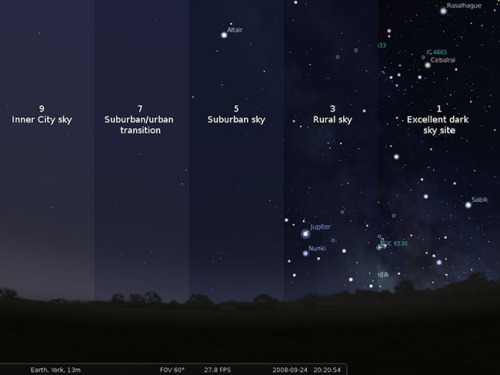
People think they know darkness, and that they experience darkness everyday, but they don’t, really.
Across the United States, natural darkness is an endangered resource. East of the Mississippi, it is already extinct; even in the West, night sky connoisseurs admit that it’s quicker to find true darkness by flying to Alice Springs, Australia, than traveling to anywhere in the lower forty-eight.
Ever since the nation’s first electric streetlight made its debut in Cleveland, on April 29, 1879, the American night has become steadily brighter. In his new book, The End of Night: Searching for Natural Darkness in an Age of Artificial Light, Paul Bogard aims to draw attention to the naturally dark night as a landscape in its own right — a separate, incredibly valuable environmental condition that we overlook and destroy at our own peril.
Read More.





When the sun sets on Stonehenge on the shortest day of the year, it’s rays align with several important stones. Twice a year, the streets of Manhattan also line up with the setting sun, a phenomenon dubbed “Manhattanhenge”. Really, most cities with grid systems will see a similar effect (though it’s most dramatic in cities with tall buildings and a view of the true horizon). You can use a great tool called The Photographer’s Ephemeris to find out the “henge” dates for your city grid - or even individual streets.
Yesterday, (Friday, January 24th) the sun lined up with New York Avenue, a street in DC that runs diagonally up to the White House. (The orange line indicates alignment with the setting sun).
I went out with our multimedia intern Meg Vogel, and captured some images of the sun setting in line with a rather Stonehenge-y sculpture that sits in the middle of that street.
Here are dates for sunset “henge” events in some cities this year:
Manhattan May 25th, July 17th
Philadelphia April 5th, September 6th
Washington DC March 18th, September 24th
Chicago March 16th, September 26th
Phoenix March 20th, September 22nd
Portland, OR March 18th, September 24th
Is your city/town a grid? When’s your henge?
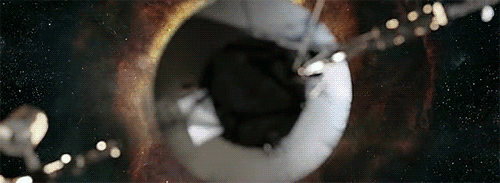
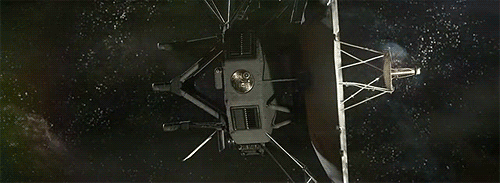
Biggest Scientific Breakthroughs of 2013
From intergalactic neutrinos and invisible brains, to the creation of miniature human “organoids”, 2013 was an remarkable year for scientific discovery. Here are some of the biggest scientific breakthroughs, innovations and advances of 2013.
Voyager I Leaves the Solar System
Escaping the solar system is no mean feat. For 36 years, NASA’s Voyager 1 spacecraft has putting distance between itself and the Sun at speeds approaching 11 miles per second. At a pace like that, scientists knew Voyager was approaching the fringes of the heliosphere that surrounds and defines our solar neighborhood – but when would it break that barrier? When would it make the leap to interstellar space? After months of uncertainty, NASA finally made the news official this September. “Voyager 1 is the first human-made object to make it into interstellar space” said Don Gurnett, lead author of the paper announcing Voyager’s departure; “we’re actually out there.”
The Milky Way is Brimming with Habitable Worlds
Planet-hunting scientists announced in November that 22% of sunlike stars in the Milky Way are orbited by potentially habitable, Earth-size worlds. This remarkable finding suggests there could be as many as two-billion planets in our galaxy suitable for life — and that the nearest such planet may be only 12 light-years away. Is Earth 2.0 out there? With figures like that, it’s hard to imagine otherwise. Who knows – with all the Kepler data we’ve got to sift through, there’s a chance we’ve already found it.
Curiosity Confirms Mars Was Once Capable of Harboring Life
In March, NASA scientists released perhaps the most compelling evidence to date that the Red Planet was once capable of harboring life. Earlier this year, Curiosity drilled some samples out of a sedimentary rock near an old river bed in Gale Crater. This geological area used to feature a series of stream channels, leaving behind finely grained bedrock indicative of previously wet conditions. Using the rover’s onboard instrumentation, NASA scientists analyzed these samples to detect some of the critical elements required for life, including sulfur, nitrogen, hydrogen, oxygen, phosphorus, and carbon. The rover is currently on a trek to its primary scientific target – a three-mile-high peak at the center of Gale Crater named Mount Sharp – where it will attempt to further reinforce its findings.
Researchers Detect Neutrinos from Another Galaxy
By drilling a 1.5 mile hole deep into an Antarctic glacier, physicists working at the IceCube South Pole Observatory this year captured 28 neutrinos, those mysterious and extremely powerful subatomic particles that can pass straight through solid matter. And here’s the real kicker: the particles likely originated from beyond our solar system – and possibly even our galaxy. "This is a landmark discovery,“ said Alexander Kusenko, a UCLA astroparticle physicist who was not involved in the investigation, "possibly a Nobel Prize in the making.”
NASA Discovers “A Previously Unknown Surprise Circling Earth”
NASA’s recently deployed Van Allen probes — a pair of robotic spacecraft launched in August 2012 to investigate Earth’s eponymous pair of radiation belts — turned out out some very unexpected findings in February, when they spotted an ephemeral third ring of radiation, previously unknown to science, surrounding our planet.
Human Cloning Becomes a Reality
A scientific milestone 17 years in the making, researchers announced in May that they had derived stem cells from cloned human embryos.The controversial technology could lead to new treatments for diseases like Parkinson’s and diabetes — while bringing us one step closer to human reproductive cloning.
Giant “Pandoravirus” Could Redefine Life as we Know it
Scientists in July announced the discovery of a pair of viruses that defy classification. Bigger and more genetically complex than any viral genus known to science, these so-called “pandoraviruses” could reignite a longstanding debate over the classification of life itself.
Brain-to-Brain Interfaces Have Arrived
Back in February, researchers announced that they had successfully established an electronic link between the brains of two rats, and demonstrated that signals from the mind of one could help the second solve basic puzzles in real time — even when those animals were separated by thousands of miles. A few months later, a similar connection was established between the brain of a human and a rat. Just one month later, researchers published the results of the first successful human-to-human brain interface. The age of the mind-meld, it seems, is near at hand.
There is Life at the End of the World
There is life in Lake Whillans. For millions of years, the small body of liquid water has lurked hundreds of meters below Antarctica’s Ross Ice Shelf, sealed off from the outside world and the scientists who would explore its subglacial depths. Earlier this year, a team of researchers led by Montana State University glaciologist John Priscu successfully bored a tunnel to Whillans and encountered life, making Priscu and his colleagues the first people in history to discover living organisms in the alien lakes at the bottom of the world.
Doctors Cure HIV in a Baby Born With the Disease
In a monumental first for medicine, doctors announced in March that a baby had been cured of an HIV infection. Dr. Deborah Persaud, who presented the child’s case at the 20th annual Conference on Retroviruses and Opportunistic Infection, called it “definitely a game-changer.”
Newly Discovered Skulls Could Prune Humans’ Evolutionary Tree
An incredibly well-preserved, 1.8-million-year-old skull from Dmanisi, Georgia suggests the evolutionary tree of the genus Homo may have fewer branches than previously believed. In a report published in October, a team led by Georgian anthropologist David Lordkipanidze writes that it is “the world’s first completely preserved hominid skull.” And what a skull it is. When considered alongside four other skulls discovered nearby, it suggests that the earliest known members of the Homo genus (H. habilis, H.rudolfensis and H. erectus) may not have been distinct, coexisting species, at all. Instead, they may have been part of a single, evolving lineage that eventually gave rise to modern humans.
Neuroscientists Turn Brains Invisible
Gaze upon the stunning effects of CLARITY, a new technique that enables scientists to turn brain matter and other tissues completely transparent. It’s been hailed as one of the most important advances for neuroanatomy in decades, and it’s not hard to see why.
[source | gifs → galaxyclusters]
The Yutu rover suffered a mysterious “abnormality” over the weekend. And the robot’s microblogged death note may make you cry.
oh gosh!
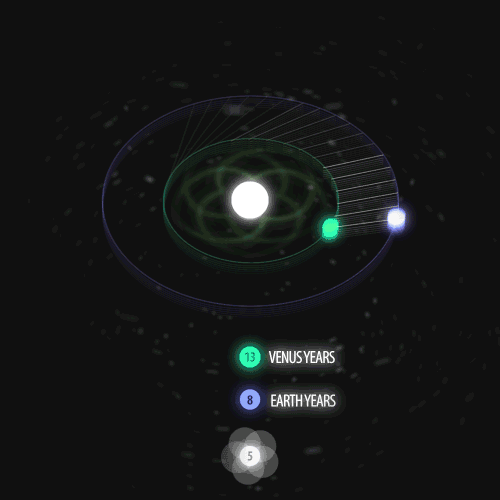
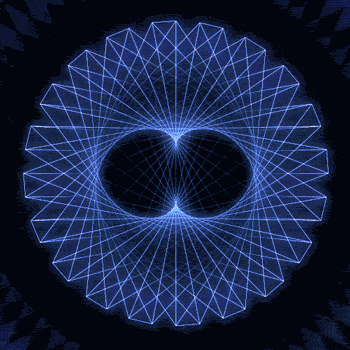



Fibonacci you crazy bastard….
As seen in the solar system (by no ridiculous coincidence), Earth orbits the Sun 8 times in the same period that Venus orbits the Sun 13 times! Drawing a line between Earth & Venus every week results in a spectacular FIVE side symmetry!!
Lets bring up those Fibonacci numbers again: 1, 1, 2, 3, 5, 8, 13, 21, 34..
So if we imagine planets with Fibonacci orbits, do they create Fibonacci symmetries?!
You bet!! Depicted here is a:
2 sided symmetry (5 orbits x 3 orbits)
3 sided symmetry (8 orbits x 5 orbits)
5 sided symmetry (13 orbits x 8 orbits) - like Earth & Venus
8 sided symmetry (21 orbits x 13 orbits)
I wonder if relationships like this exist somewhere in the universe….
Read the Book | Follow | Hi-Res -2- -3- -5- -8-
Tampons were packed with their strings connecting them, like a strip of sausages, so they wouldn’t float away. Engineers asked Ride, “Is 100 the right number?” She would be in space for a week. “That would not be the right number,” she told them. At every turn, her difference was made clear to her. When it was announced Ride had been named to a space flight mission, her shuttle commander, Bob Crippen, who became a lifelong friend and colleague, introduced her as “undoubtedly the prettiest member of the crew.” At another press event, a reporter asked Ride how she would react to a problem on the shuttle: “Do you weep?”
Astronaut Sally Ride and the Burden of Being “The First” (via dinosaurparty)


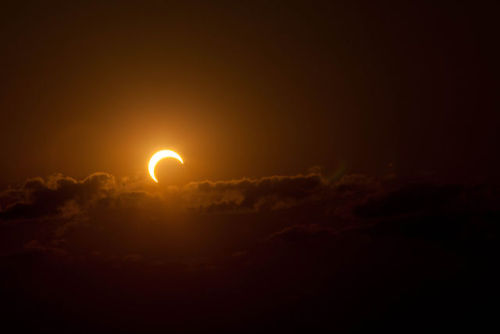

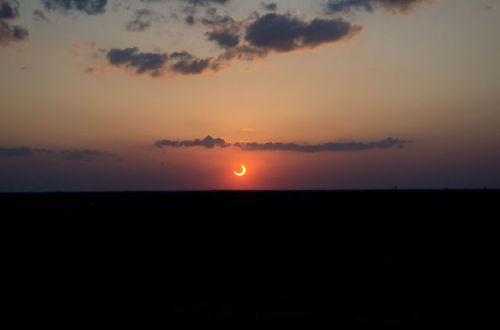


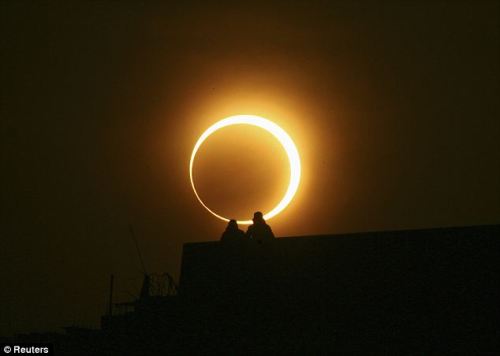
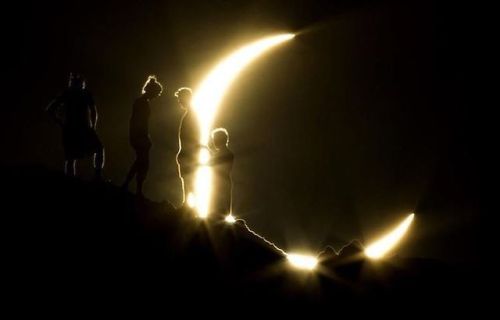
A ‘Ring of Fire’ solar eclipse is a rare phenomenon that occurs when the moon’s orbit is at its apogee: the part of its orbit farthest away from the Earth. Because the moon is so far away, it seems smaller than normal to the human eye. The result is that the moon doesn't entirely block out our view of the sun, but leaves an “annulus,” or ring of sunlight glowing around it. Hence the term “annular” eclipse rather than a “total” eclipse.
Voyager is so happy, because it’s the bravest satellite of all. It has gone the furthest. And it’s not lonely, because it’s talking to us. It phones home. And it tells us all about the wonderful things that it’s seeing. …There’s a whole universe to explore, and it’s just leaving our Solar System right now. It’s very brave and very lucky to be doing what it’s doing, so it’s not going to get lost. It’s traveled further than anything we’ve ever built has traveled before. It’s actually showing us the way. … It might have been safer for it to just stay home, and stay inside a building, but then it would have been sad forever, because it never would have done its purpose. It never would have discovered things. It’s all a wonderful story of great discovery and success, and it couldn’t have happened if Voyager hadn’t been brave… It’s not really the fact that everything always has a start and an end, it’s what happens in the middle that counts. What do you while you’re alive? What do you do while you’re laughing? And I think we’re doing exactly what makes Voyager joyful and as happy as it could be. Think about the fact that you’re a little bit like Voyager. In that you’re going to go see the world, and you’re going to call your mom on the phone and tell her about the wonderful things that you see. … You wouldn’t want to spend your whole life hiding under your bed and never seeing anything in your whole life, you want to be able to do what makes you happy and joyful and learn about things to discover. You might be the person that discovers something really important for everybody else on the world, but you can never discover that if you just hide and only do things that are safe. So think about yourself a little bit like Voyager. What makes you laugh? It’s not just staying, hiding underneath your bed safely at home.
Cmdr. Chris Hadfield, reassuring a five-year-old who was worried about the Voyager satellite (source)
oh no I’m having feelings about a satellite
tagging Doctor Who, because.
(via reconditarmonia)
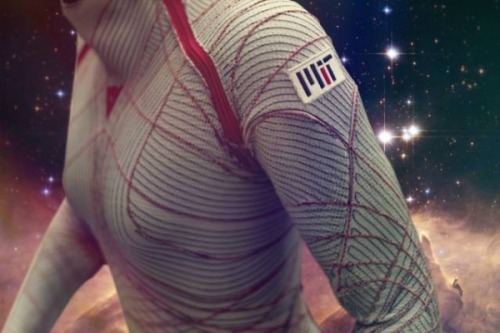
Next Generation Spacesuit like Second Skin
Scientists from MIT have designed a next-generation spacesuit that acts practically as a second skin, and could revolutionize the way future astronauts travel into space. (Photo : Jose-Luis Olivares/MIT)
Astronauts are used to climbing into conventional bulky, gas-pressurized spacesuits, but this new design could allow them to travel in style. Soon they may don a lightweight, skintight and stretchy garment lined with tiny, muscle-like coils. Essentially the new suit acts like a giant piece of shrink-wrap, in which the coils contract and tighten when plugged into a power supply, thereby creating a “second skin.”
“With conventional spacesuits, you’re essentially in a balloon of gas that’s providing you with the necessary one-third of an atmosphere [of pressure,] to keep you alive in the vacuum of space,” lead researcher Dava Newman, a professor of aeronautics and astronautics and engineering systems at MIT, said in astatement.
“We want to achieve that same pressurization, but through mechanical counterpressure - applying the pressure directly to the skin, thus avoiding the gas pressure altogether. We combine passive elastics with active materials. … Ultimately, the big advantage is mobility, and a very lightweight suit for planetary exploration.”
Newman, who has worked for the past decade on a design for the next-generation spacesuit, describes the new garment in detail in the journal IEEE/ASME: Transactions on Mechatronics.
The MIT BioSuit’s coils, which are a main feature of the outfit, are made from a shape-memory alloy (SMA). At a certain temperature, the material can “remember” and spring back to its engineered shape after being bent or misshapen.
Skintight suits are not a novel idea, but in the past scientists have always struggled with the question: how do you get in and out of a suit that is so tight? That’s where the SMAs come in, allowing the suit to contract only when heated, and subsequently stretched back to a looser shape when cooled.
Though the lightweight suit may not seem at first like it can withstand the harsh environment that is outer space, Newman and his colleagues are sure that the BioSuit would not only give astronauts much more freedom during planetary exploration, but it would also fully support these space explorers.
Newman and his team are not only working on how to keep the suit tight for long periods of time, but also believe their design could be applied to other attires, such as athletic wear or military uniforms.
“An integrated suit is exciting to think about to enhance human performance,” Newman added. “We’re trying to keep our astronauts alive, safe, and mobile, but these designs are not just for use in space.”

Margaret Hamilton is a computer scientist and mathematician. She was the lead software engineer for Project Apollo. Her work prevented an abort of the Apollo 11 moon landing. She’s also credited for coining the term “software engineer."































![The Science Of Interstellar - Black Hole [YouTube Video]](https://64.media.tumblr.com/a1cf99c4f65fd1eae0d88d0485c9f109/tumblr_nfogd8kIyF1qb6kd0o1_250.gif)
![The Science Of Interstellar - Black Hole [YouTube Video]](https://64.media.tumblr.com/e1f24da4d0364bc2ca8dbb2c0bdfea28/tumblr_nfogd8kIyF1qb6kd0o3_250.gif)
![The Science Of Interstellar - Black Hole [YouTube Video]](https://64.media.tumblr.com/821ab338f5c9fd5c61cc1af57318cbaf/tumblr_nfogd8kIyF1qb6kd0o4_250.gif)
![The Science Of Interstellar - Black Hole [YouTube Video]](https://64.media.tumblr.com/f40b0668bb5fc168df25afc88b7bdfe5/tumblr_nfogd8kIyF1qb6kd0o5_250.gif)
![The Science Of Interstellar - Black Hole [YouTube Video]](https://64.media.tumblr.com/04b808634cb4e90392903fc5c65e1d79/tumblr_nfogd8kIyF1qb6kd0o6_250.gif)
![The Science Of Interstellar - Black Hole [YouTube Video]](https://64.media.tumblr.com/b45ee46e319ac5ffc37f82f071b2dac3/tumblr_nfogd8kIyF1qb6kd0o2_250.gif)



